Your personal Tumblr journey starts here
Hubble Space Telescope - Blog Posts
Scientists believe they've found evidence of what was once an ocean on Mars. Check out the shoreline on mars!


Planetary Nebula NGC 2440
Planetary nebula NGC 2440 is a relic of a star once like our Sun that has cast off its outer layers of gas, forming a colorful cocoon around the star's remaining core.
Clearest Image ever taken of Mars’ North Pole. Yes that’s water ice.


e t e r n a l b l i s s

Love Letters from Space
Love is in the air, and it’s out in space too! The universe is full of amazing chemistry, cosmic couples held together by gravitational attraction, and stars pulsing like beating hearts.
Celestial objects send out messages we can detect if we know how to listen for them. Our upcoming Nancy Grace Roman Space Telescope will help us scour the skies for all kinds of star-crossed signals.

Celestial Conversation Hearts
Communication is key for any relationship – including our relationship with space. Different telescopes are tuned to pick up different messages from across the universe, and combining them helps us learn even more. Roman is designed to see some visible light – the type of light our eyes can see, featured in the photo above from a ground-based telescope – in addition to longer wavelengths, called infrared. That will help us peer through clouds of dust and across immense stretches of space.
Other telescopes can see different types of light, and some detectors can even help us study cosmic rays, ghostly neutrinos, and ripples in space called gravitational waves.

Intergalactic Hugs
This visible and near-infrared image from the Hubble Space Telescope captures two hearts locked in a cosmic embrace. Known as the Antennae Galaxies, this pair’s love burns bright. The two spiral galaxies are merging together, igniting the birth of brand new baby stars.
Stellar nurseries are often very dusty places, which can make it hard to tell what’s going on. But since Roman can peer through dust, it will help us see stars in their infancy. And Roman’s large view of space coupled with its sharp, deep imaging will help us study how galaxy mergers have evolved since the early universe.

Cosmic Chemistry
Those stars are destined to create new chemistry, forging elements and scattering them into space as they live, die, and merge together. Roman will help us understand the cosmic era when stars first began forming. The mission will help scientists learn more about how elements were created and distributed throughout galaxies.
Did you know that U and I (uranium and iodine) were both made from merging neutron stars? Speaking of which…

Fatal Attraction
When two neutron stars come together in a marriage of sorts, it creates some spectacular fireworks! While they start out as stellar sweethearts, these and some other types of cosmic couples are fated for devastating breakups.
When a white dwarf – the leftover core from a Sun-like star that ran out of fuel – steals material from its companion, it can throw everything off balance and lead to a cataclysmic explosion. Studying these outbursts, called type Ia supernovae, led to the discovery that the expansion of the universe is speeding up. Roman will scan the skies for these exploding stars to help us figure out what’s causing the expansion to accelerate – a mystery known as dark energy.

Going Solo
Plenty of things in our galaxy are single, including hundreds of millions of stellar-mass black holes and trillions of “rogue” planets. These objects are effectively invisible – dark objects lost in the inky void of space – but Roman will see them thanks to wrinkles in space-time.
Anything with mass warps the fabric of space-time. So when an intervening object nearly aligns with a background star from our vantage point, light from the star curves as it travels through the warped space-time around the nearer object. The object acts like a natural lens, focusing and amplifying the background star’s light.
Thanks to this observational effect, which makes stars appear to temporarily pulse brighter, Roman will reveal all kinds of things we’d never be able to see otherwise.

Roman is nearly ready to set its sights on so many celestial spectacles. Follow along with the mission’s build progress in this interactive virtual tour of the observatory, and check out these space-themed Valentine’s Day cards.
Make sure to follow us on Tumblr for your regular dose of space!
12 Great Gifts from Astronomy
This is a season where our thoughts turn to others and many exchange gifts with friends and family. For astronomers, our universe is the gift that keeps on giving. We’ve learned so much about it, but every question we answer leads to new things we want to know. Stars, galaxies, planets, black holes … there are endless wonders to study.
In honor of this time of year, let’s count our way through some of our favorite gifts from astronomy.
Our first astronomical gift is … one planet Earth
So far, there is only one planet that we’ve found that has everything needed to support life as we know it — Earth. Even though we’ve discovered over 5,200 planets outside our solar system, none are quite like home. But the search continues with the help of missions like our Transiting Exoplanet Survey Satellite (TESS). And even you (yes, you!) can help in the search with citizen science programs like Planet Hunters TESS and Backyard Worlds.

Our second astronomical gift is … two giant bubbles
Astronomers found out that our Milky Way galaxy is blowing bubbles — two of them! Each bubble is about 25,000 light-years tall and glows in gamma rays. Scientists using data from our Fermi Gamma-ray Space Telescope discovered these structures in 2010, and we're still learning about them.

Our third astronomical gift is … three types of black holes
Most black holes fit into two size categories: stellar-mass goes up to hundreds of Suns, and supermassive starts at hundreds of thousands of Suns. But what happens between those two? Where are the midsize ones? With the help of NASA’s Hubble Space Telescope, scientists found the best evidence yet for that third, in between type that we call intermediate-mass black holes. The masses of these black holes should range from around a hundred to hundreds of thousands of times the Sun’s mass. The hunt continues for these elusive black holes.

Our fourth and fifth astronomical gifts are … Stephan’s Quintet
When looking at this stunning image of Stephan’s Quintet from our James Webb Space Telescope, it seems like five galaxies are hanging around one another — but did you know that one of the galaxies is much closer than the others? Four of the five galaxies are hanging out together about 290 million light-years away, but the fifth and leftmost galaxy in the image below — called NGC 7320 — is actually closer to Earth at just 40 million light-years away.

Our sixth astronomical gift is … an eclipsing six-star system
Astronomers found a six-star system where all of the stars undergo eclipses, using data from our TESS mission, a supercomputer, and automated eclipse-identifying software. The system, called TYC 7037-89-1, is located 1,900 light-years away in the constellation Eridanus and the first of its kind we’ve found.

Our seventh astronomical gift is … seven Earth-sized planets
In 2017, our now-retired Spitzer Space Telescope helped find seven Earth-size planets around TRAPPIST-1. It remains the largest batch of Earth-size worlds found around a single star and the most rocky planets found in one star’s habitable zone, the range of distances where conditions may be just right to allow the presence of liquid water on a planet’s surface.
Further research has helped us understand the planets’ densities, atmospheres, and more!

Our eighth astronomical gift is … an (almost) eight-foot mirror
The primary mirror on our Nancy Grace Roman Space Telescope is approximately eight feet in diameter, similar to our Hubble Space Telescope. But Roman can survey large regions of the sky over 1,000 times faster, allowing it to hunt for thousands of exoplanets and measure light from a billion galaxies.

Our ninth astronomical gift is … a kilonova nine days later
In 2017, the National Science Foundation (NSF)’s Laser Interferometer Gravitational-Wave Observatory (LIGO) and European Gravitational Observatory’s Virgo detected gravitational waves from a pair of colliding neutron stars. Less than two seconds later, our telescopes detected a burst of gamma rays from the same event. It was the first time light and gravitational waves were seen from the same cosmic source. But then nine days later, astronomers saw X-ray light produced in jets in the collision’s aftermath. This later emission is called a kilonova, and it helped astronomers understand what the slower-moving material is made of.

Our tenth astronomical gift is … NuSTAR’s ten-meter-long mast
Our NuSTAR X-ray observatory is the first space telescope able to focus on high-energy X-rays. Its ten-meter-long (33 foot) mast, which deployed shortly after launch, puts NuSTAR’s detectors at the perfect distance from its reflective optics to focus X-rays. NuSTAR recently celebrated 10 years since its launch in 2012.

Our eleventh astronomical gift is … eleven days of observations
How long did our Hubble Space Telescope stare at a seemingly empty patch of sky to discover it was full of thousands of faint galaxies? More than 11 days of observations came together to capture this amazing image — that’s about 1 million seconds spread over 400 orbits around Earth!

Our twelfth astronomical gift is … a twelve-kilometer radius
Pulsars are collapsed stellar cores that pack the mass of our Sun into a whirling city-sized ball, compressing matter to its limits. Our NICER telescope aboard the International Space Station helped us precisely measure one called J0030 and found it had a radius of about twelve kilometers — roughly the size of Chicago! This discovery has expanded our understanding of pulsars with the most precise and reliable size measurements of any to date.

Stay tuned to NASA Universe on Twitter and Facebook to keep up with what’s going on in the cosmos every day. You can learn more about the universe here.
Make sure to follow us on Tumblr for your regular dose of space!
Roman’s Family Portrait of Millions of Galaxies
About 15 years ago, our Hubble Space Telescope captured this ultra-deep field image of space, revealing thousands of galaxies tucked away in a seemingly empty spot in the sky.

Now, imagine this view of the cosmos – and all the mysteries in it – at a scale 300 times larger than Hubble's.
Our upcoming Nancy Grace Roman Telescope could capture just that.

Roman recently released this gorgeous simulated image that gives us a preview of what the telescope could see. Each tiny speck represents a galaxy filled with billions of stars. And it’s more than just a pretty picture – scientists could learn a lot from an observation like this!

Since Roman can see much more of the sky at a time, it could create an ultra-deep field image that’s far larger than Hubble’s. So instead of revealing thousands of galaxies, Roman would see millions!

Roman’s ability to look far out into space with such an expansive view would help us better understand what the universe was like when it was young. For example, scientists could study a lot of cosmic transitions, like how galaxies switch from star-making factories to a quieter stage when star formation is complete and how the universe went from being mainly opaque to the brilliant starscape we see today.

And these are just a few of the mysteries Roman could help us solve!
Set to launch in the mid-2020s, our Nancy Grace Roman Space Telescope, is designed to unravel the secrets of dark energy and dark matter, search for and image exoplanets, and explore many topics in infrared astrophysics. You can learn about some of the other science Roman will do here.
Make sure to follow us on Tumblr for your regular dose of space!

Happy New Year From NASA! The year 2021 was one for the books, so what will 2022 bring? No matter what, remember: You are made of star stuff. Sparkly, glorious star stuff.
What's this image? Click here. Credit: ESA/Hubble and NASA, A. Sarajedini Make sure to follow us on Tumblr for your regular dose of space!
Decoding Nebulae
We can agree that nebulae are some of the most majestic-looking objects in the universe. But what are they exactly? Nebulae are giant clouds of gas and dust in space. They’re commonly associated with two parts of the life cycle of stars: First, they can be nurseries forming new baby stars. Second, expanding clouds of gas and dust can mark where stars have died.

Not all nebulae are alike, and their different appearances tell us what's happening around them. Since not all nebulae emit light of their own, there are different ways that the clouds of gas and dust reveal themselves. Some nebulae scatter the light of stars hiding in or near them. These are called reflection nebulae and are a bit like seeing a street lamp illuminate the fog around it.

In another type, called emission nebulae, stars heat up the clouds of gas, whose chemicals respond by glowing in different colors. Think of it like a neon sign hanging in a shop window!

Finally there are nebulae with dust so thick that we’re unable to see the visible light from young stars shine through it. These are called dark nebulae.

Our missions help us see nebulae and identify the different elements that oftentimes light them up.
The Hubble Space Telescope is able to observe the cosmos in multiple wavelengths of light, ranging from ultraviolet, visible, and near-infrared. Hubble peered at the iconic Eagle Nebula in visible and infrared light, revealing these grand spires of dust and countless stars within and around them.

The Chandra X-ray Observatory studies the universe in X-ray light! The spacecraft is helping scientists see features within nebulae that might otherwise be hidden by gas and dust when viewed in longer wavelengths like visible and infrared light. In the Crab Nebula, Chandra sees high-energy X-rays from a pulsar (a type of rapidly spinning neutron star, which is the crushed, city-sized core of a star that exploded as a supernova).

The James Webb Space Telescope will primarily observe the infrared universe. With Webb, scientists will peer deep into clouds of dust and gas to study how stars and planetary systems form.

The Spitzer Space Telescope studied the cosmos for over 16 years before retiring in 2020. With the help of its detectors, Spitzer revealed unknown materials hiding in nebulae — like oddly-shaped molecules and soot-like materials, which were found in the California Nebula.

Studying nebulae helps scientists understand the life cycle of stars. Did you know our Sun got its start in a stellar nursery? Over 4.5 billion years ago, some gas and dust in a nebula clumped together due to gravity, and a baby Sun was born. The process to form a baby star itself can take a million years or more!

After billions more years, our Sun will eventually puff into a huge red giant star before leaving behind a beautiful planetary nebula (so-called because astronomers looking through early telescopes thought they resembled planets), along with a small, dense object called a white dwarf that will cool down very slowly. In fact, we don’t think the universe is old enough yet for any white dwarfs to have cooled down completely.
Since the Sun will live so much longer than us, scientists can't observe its whole life cycle directly ... but they can study tons of other stars and nebulae at different phases of their lives and draw conclusions about where our Sun came from and where it's headed. While studying nebulae, we’re seeing the past, present, and future of our Sun and trillions of others like it in the cosmos.

To keep up with the most recent cosmic news, follow NASA Universe on Twitter and Facebook.
Make sure to follow us on Tumblr for your regular dose of space.
Hubble’s Guide to Viewing Deep Fields
They say a picture is worth a thousand words, but no images have left a greater impact on our understanding of the universe quite like the Hubble Space Telescope’s deep fields. Like time machines, these iconic images transport humanity billions of light-years back in time, offering a glimpse into the early universe and insight into galaxy evolution!

You’ve probably seen these images before, but what exactly do we see within them? Deep field images are basically core samples of our universe. By peering into a small portion of the night sky, we embark on a journey through space and time as thousands of galaxies appear before our very eyes.
So, how can a telescope the size of a school bus orbiting 340 miles above Earth uncover these mind-boggling galactic masterpieces? We’re here to break it down. Here’s Hubble’s step-by-step guide to viewing deep fields:
Step 1: Aim at the darkness
Believe it or not, capturing the light of a thousand galaxies actually begins in the dark. To observe extremely faint galaxies in the farthest corners of the cosmos, we need minimal light interference from nearby stars and other celestial objects. The key is to point Hubble’s camera at a dark patch of sky, away from the outer-edge glow of our own galaxy and removed from the path of our planet, the Sun, or the Moon. This “empty” black canvas of space will eventually transform into a stunning cosmic mosaic of galaxies.

The first deep field image was captured in 1995. In order to see far beyond nearby galaxies, Hubble’s camera focused on a relatively empty patch of sky within the constellation Ursa Major. The results were this step-shaped image, an extraordinary display of nearly 3,000 galaxies spread across billions of light-years, featuring some of the earliest galaxies to emerge shortly after the big bang.
Step 2: Take it all in
The universe is vast, and peering back billions of years takes time. Compared to Hubble’s typical exposure time of a few hours, deep fields can require hundreds of hours of exposure over several days. Patience is key. Capturing and combining several separate exposures allows astronomers to assemble a comprehensive core slice of our universe, providing key information about galaxy formation and evolution. Plus, by combining exposures from different wavelengths of light, astronomers are able to better understand galaxy distances, ages, and compositions.

The Hubble Ultra Deep Field is the deepest visible-light portrait of our universe. This astonishing display of nearly 10,000 galaxies was imaged over the course of 400 Hubble orbits around Earth, with a total of 800 exposures captured over 11.3 days.
Step 3: Go beyond what’s visible
The ability to see across billions of light-years and observe the farthest known galaxies in our universe requires access to wavelengths beyond those visible to the human eye. The universe is expanding and light from distant galaxies is stretched far across space, taking a long time to reach us here on Earth. This phenomenon, known as “redshift,” causes longer wavelengths of light to appear redder the farther they have to travel through space. Far enough away, and the wavelengths will be stretched into infrared light. This is where Hubble’s infrared vision comes in handy. Infrared light allows us to observe light from some of the earliest galaxies in our universe and better understand the history of galaxy formation over time.

In 2009, Hubble observed the Ultra Deep Field in the infrared. Using the Near Infrared Camera and Multi-Object Spectrometer, astronomers gathered one of the deepest core samples of our universe and captured some of the most distant galaxies ever observed.
Step 4: Use your time machine
Apart from their remarkable beauty and impressive imagery, deep field images are packed with information, offering astronomers a cosmic history lesson billions of years back in time within a single portrait. Since light from distant galaxies takes time to reach us, these images allow astronomers to travel through time and observe these galaxies as they appear at various stages in their development. By observing Hubble’s deep field images, we can begin to discover the questions we’ve yet to ask about our universe.

Credit: NASA, ESA, R. Bouwens and G. Illingworth (University of California, Santa Cruz)
Hubble’s deep field images observe galaxies that emerged as far back as the big bang. This image of the Hubble Ultra Deep Field showcases 28 of over 500 early galaxies from when the universe was less than one billion years old. The light from these galaxies represent different stages in their evolution as their light travels through space to reach us.
Step 5: Expand the cosmic frontier
Hubble’s deep fields have opened a window to a small portion of our vast universe, and future space missions will take this deep field legacy even further. With advancements in technologies and scientific instruments, we will soon have the ability to further uncover the unimaginable.


Slated for launch in late 2021, NASA’s James Webb Space Telescope will offer a new lens to our universe with its impressive infrared capabilities. Relying largely on the telescope’s mid-infrared instrument, Webb will further study portions of the Hubble deep field images in greater detail, pushing the boundaries of the cosmic frontier even further.
And there you have it, Hubble’s guide to unlocking the secrets of the cosmos! To this day, deep field images remain fundamental building blocks for studying galaxy formation and deepening not only our understanding of the universe, but our place within it as well.
Still curious about Hubble Deep Fields? Explore more and follow along on Twitter, Facebook, and Instagram with #DeepFieldWeek!
Make sure to follow us on Tumblr for your regular dose of space!

Our universe is FULL of strange and surprising things.
And luckily, our Hubble Space Telescope is there to be our window to the unimaginable! Hubble recently ran into an issue with its payload computer which controls and coordinates science instruments onboard the spacecraft. On July 16, teams successfully switched to backup hardware to compensate for the problem! A day later, the telescope resumed normal science operations. To celebrate, we’re taking you back to 2016 when our dear Hubble captured perhaps one of the most intriguing objects in our Milky Way galaxy: a massive star trapped inside a bubble! The star inside this Bubble Nebula burns a million times brighter than our Sun and produces powerful gaseous outflows that howl at more than four million miles per hour. Based on the rate the star is expending energy, scientists estimate in 10 to 20 million years it will explode as a supernova. And the bubble will succumb to a common fate: It’ll pop.
Black Holes: Seeing the Invisible!
Black holes are some of the most bizarre and fascinating objects in the cosmos. Astronomers want to study lots of them, but there’s one big problem – black holes are invisible! Since they don’t emit any light, it’s pretty tough to find them lurking in the inky void of space. Fortunately there are a few different ways we can “see” black holes indirectly by watching how they affect their surroundings.

Speedy stars
If you’ve spent some time stargazing, you know what a calm, peaceful place our universe can be. But did you know that a monster is hiding right in the heart of our Milky Way galaxy? Astronomers noticed stars zipping superfast around something we can’t see at the center of the galaxy, about 10 million miles per hour! The stars must be circling a supermassive black hole. No other object would have strong enough gravity to keep them from flying off into space.

Two astrophysicists won half of the Nobel Prize in Physics last year for revealing this dark secret. The black hole is truly monstrous, weighing about four million times as much as our Sun! And it seems our home galaxy is no exception – our Hubble Space Telescope has revealed that the hubs of most galaxies contain supermassive black holes.
Shadowy silhouettes
Technology has advanced enough that we’ve been able to spot one of these supermassive black holes in a nearby galaxy. In 2019, astronomers took the first-ever picture of a black hole in a galaxy called M87, which is about 55 million light-years away. They used an international network of radio telescopes called the Event Horizon Telescope.

In the image, we can see some light from hot gas surrounding a dark shape. While we still can’t see the black hole itself, we can see the “shadow” it casts on the bright backdrop.
Shattered stars
Black holes can come in a smaller variety, too. When a massive star runs out of the fuel it uses to shine, it collapses in on itself. These lightweight or “stellar-mass” black holes are only about 5-20 times as massive as the Sun. They’re scattered throughout the galaxy in the same places where we find stars, since that’s how they began their lives. Some of them started out with a companion star, and so far that’s been our best clue to find them.

Some black holes steal material from their companion star. As the material falls onto the black hole, it gets superhot and lights up in X-rays. The first confirmed black hole astronomers discovered, called Cygnus X-1, was found this way.
If a star comes too close to a supermassive black hole, the effect is even more dramatic! Instead of just siphoning material from the star like a smaller black hole would do, a supermassive black hole will completely tear the star apart into a stream of gas. This is called a tidal disruption event.
Making waves
But what if two companion stars both turn into black holes? They may eventually collide with each other to form a larger black hole, sending ripples through space-time – the fabric of the cosmos!

These ripples, called gravitational waves, travel across space at the speed of light. The waves that reach us are extremely weak because space-time is really stiff.
Three scientists received the 2017 Nobel Prize in Physics for using LIGO to observe gravitational waves that were sent out from colliding stellar-mass black holes. Though gravitational waves are hard to detect, they offer a way to find black holes without having to see any light.
We’re teaming up with the European Space Agency for a mission called LISA, which stands for Laser Interferometer Space Antenna. When it launches in the 2030s, it will detect gravitational waves from merging supermassive black holes – a likely sign of colliding galaxies!

Rogue black holes
So we have a few ways to find black holes by seeing stuff that’s close to them. But astronomers think there could be 100 million black holes roaming the galaxy solo. Fortunately, our Nancy Grace Roman Space Telescope will provide a way to “see” these isolated black holes, too.

Roman will find solitary black holes when they pass in front of more distant stars from our vantage point. The black hole’s gravity will warp the starlight in ways that reveal its presence. In some cases we can figure out a black hole’s mass and distance this way, and even estimate how fast it’s moving through the galaxy.
For more about black holes, check out these Tumblr posts!
⚫ Gobble Up These Black (Hole) Friday Deals!
⚫ Hubble’s 5 Weirdest Black Hole Discoveries
Make sure to follow us on Tumblr for your regular dose of space: http://nasa.tumblr.com.
Galaxies: Cities of Stars
Galaxies are like cities made of oodles of stars, gas, and dust bound together by gravity. These beautiful cosmic structures come in many shapes and sizes. Though there are a slew of galaxies in the universe, there are only a few we can see with the unaided eye or backyard telescope.
How many types are out there, how’d so many of them wind up with weird names, and how many stars live inside them? Hold tight while we explore these cosmic metropolises.

Galaxies come in lots of different shapes, sizes, and colors. But astronomers have noticed that there are mainly three types: spiral, elliptical, and irregular.
Spiral galaxies, like our very own Milky Way, look similar to pinwheels! These galaxies tend to have a bulging center heavily populated by stars, with elongated, sparser arms of dust and stars that wrap around it. Usually, there’s a huge black hole hiding at the center, like the Milky Way’s Sagittarius A* (pronounced A-star). Our galactic neighbor, Andromeda (also known as Messier 31 or M31), is also a spiral galaxy!

Elliptical galaxies tend to be smooth spheres of gas, dust, and stars. Like spiral galaxies, their centers are typically bulges surrounded by a halo of stars (but minus the epic spiral arms). The stars in these galaxies tend to be spread out neatly throughout the galaxies and are some of the oldest stars in the universe! Messier 87 (M87) is one example of an elliptical galaxy. The supermassive black hole at its center was recently imaged by the Event Horizon Telescope.

Irregular galaxies are, well … a bit strange. They have one-of-a-kind shapes, and many just look like messy blobs. Astronomers think that irregular galaxies' uniqueness is a result of interactions with other galaxies, like collisions! Galaxies are so big, with so much distance between their stars, that even when they collide, their stars usually do not. Galaxy collisions have been important to the formation of our Milky Way and others. When two galaxies collide, clouds of gas, dust, and stars are violently thrown around, forming an entirely new, larger one! This could be the cause of some irregular galaxies seen today.

Now that we know the different types of galaxies, what about how many stars they contain? Galaxies can come in lots of different sizes, even among each type. Dwarf galaxies, the smallest version of spiral, elliptical, and irregular galaxies, are usually made up of 1,000 to billions of stars. Compared to our Milky Way’s 200 to 400 billion stars, the dwarf galaxy known as the Small Magellanic Cloud is tiny, with just a few hundred million stars! IC 1101, on the other hand, is one of the largest elliptical galaxies found so far, containing almost 100 trillion stars.

Ever wondered how galaxies get their names? Astronomers have a number of ways to name galaxies, like the constellations we see them in or what we think they resemble. Some even have multiple names!
A more formal way astronomers name galaxies is with two-part designations based on astronomical catalogs, published collections of astronomical objects observed by specific astronomers, observatories, or spacecraft. These give us cryptic names like M51 or Swift J0241.3-0816. Catalog names usually have two parts:
A letter, word, or short acronym that identifies a specific astronomical catalog.
A sequence of numbers and/or letters that uniquely identify the galaxy within that catalog.
For M51, the “M” comes from the Messier catalog, which Charles Messier started compiling in 1771, and the "51" is because it’s the 51st entry in that catalog. Swift J0241.3-0816 is a galaxy observed by the Swift satellite, and the numbers refer to its location in the sky, similar to latitude and longitude on Earth.

There’s your quick intro to galaxies, but there’s much more to learn about them. Keep up with NASA Universe on Facebook and Twitter where we post regularly about galaxies.
Make sure to follow us on Tumblr for your regular dose of space: http://nasa.tumblr.com.
Boo-tiful Ring Galaxies

A ghoulish secret lurks within each of these gorgeous galaxies. Their rings are dotted with stellar graveyards!

These objects are called ring galaxies, and scientists think most of them form in monster-sized crashes. Not just any galaxy collision will do the trick, though. To produce the treat of a ring, a smaller galaxy needs to ram through the center of a larger galaxy at just the perfect angle.

The collision causes ripples that disturb both galaxies. The gravitational shock causes dust, gas, and stars in the larger galaxy’s disk to rush outward. As this ring of material plows out from the galaxy’s center, gas clouds collide and trigger the birth of new stars.

In visible light, the blue areas in the galaxies’ rings show us where young, hot stars are growing up. Faint, pink regions around the ring mark stellar nurseries where even younger stars set hydrogen gas aglow.
The newborn stars come in a mix of sizes, from smaller ones like our Sun all the way up to huge stars with tens of times the Sun’s mass. And those massive stars live large!
While a star like our Sun will last many billions of years before running out of fuel, larger stars burn much brighter and faster. After just a few million years, the largest stars explode as supernovae. When massive stars die, they leave behind a stellar corpse, either a neutron star or black hole.

When we turn our X-ray telescopes to these ring galaxies, we see telltale signs of stellar remnants dotted throughout their ghostly circles. The purple dots in the X-ray image above are neutron stars or black holes that are siphoning off gas from a companion star, like a vampire. The gas reinvigorates stellar corpses, which heat up and emit X-rays. These gas-thirsty remains are beacons lighting the way to stellar graveyards.
Spiral galaxies — like our home galaxy, the Milky Way — have curved arms that appear to sweep out around a bright center. The dust and gas in those spiral arms press together, causing cycles of star formation that result in a more even mix of new stars and stellar corpses scattered throughout our galaxy. No creepy ring of stellar corpses here!
To visit some other eerie places in the universe, check out the latest additions to the Galaxy of Horrors poster series and follow NASA Universe on Twitter and Facebook for news about black holes, neutron stars, galaxies, and all the amazing objects outside our solar system.
Make sure to follow us on Tumblr for your regular dose of space: http://nasa.tumblr.com
Scary Space: New Halloween Poster Treats from NASA
Halloween is just around the corner. Need some chilling décor? We’ve got you – and your walls – covered with three new Galaxy of Horrors posters that showcase some of the most terrifying topics in the universe.
Gamma Ray Ghouls

In the depths of the universe, the cores of two collapsed stars violently merge to release a burst of the deadliest and most powerful form of light, known as gamma rays. These beams of doom are unleashed upon their unfortunate surroundings, shining a billion trillion times brighter than the Sun for up to 30 terrifying seconds. No spaceship will shield you from their blinding destruction!
Galactic Graveyard

The chillingly haunted galaxy called MACS 2129-1 mysteriously stopped making stars only a few billion years after the Big Bang. It became a cosmic cemetery, illuminated by the red glow of decaying stars. Dare to enter and you might encounter the frightening corpses of exoplanets or the final death throes of once-mighty stars.
Dark Matter

Something strange and mysterious creeps throughout the cosmos. Scientists call it dark matter. It is scattered in an intricate web that forms the skeleton of our universe. Dark matter is invisible, only revealing its presence by pushing and pulling on objects we can see. NASA’s Roman Space Telescope will investigate its secrets. What will it find?
Download the full set in English and Spanish here.
Make sure to follow us on Tumblr for your regular dose of space: http://nasa.tumblr.com
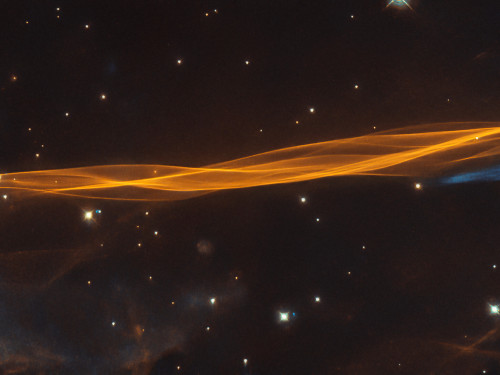
Do you believe in magic? ✨ While appearing as a delicate and light veil draped across the sky, this @NASAHubble image reminds us of the power of imagination. What does this look like to you? In reality, it's a small section of a Cygnus supernova blast wave, located around 2,400 light-years away. The original supernova explosion blasted apart a dying star about 20 times more massive than our Sun between 10,000 and 20,000 years ago. Since then, the remnant has expanded 60 light-years from its center. Credit: @ESA/Hubble & NASA, W. Blair; acknowledgment: Leo Shatz

Taking advantage of a total lunar eclipse, astronomers using our Hubble Space Telescope have detected ozone in our atmosphere. Why's this important? 🔭 Researchers can now use this new method – and space telescopes – to continue the search for life in our universe. Find out more HERE.
Make sure to follow us on Tumblr for your regular dose of space: https://go.nasa.gov/3fGbZ0I
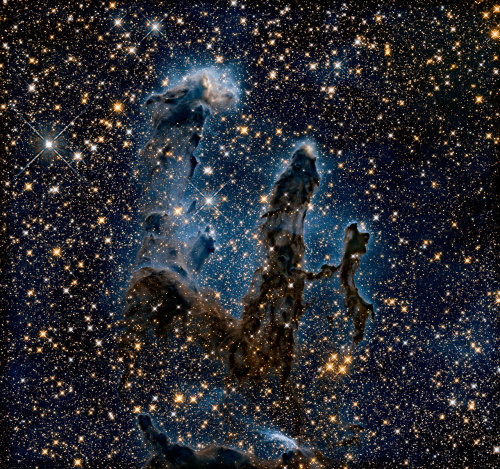
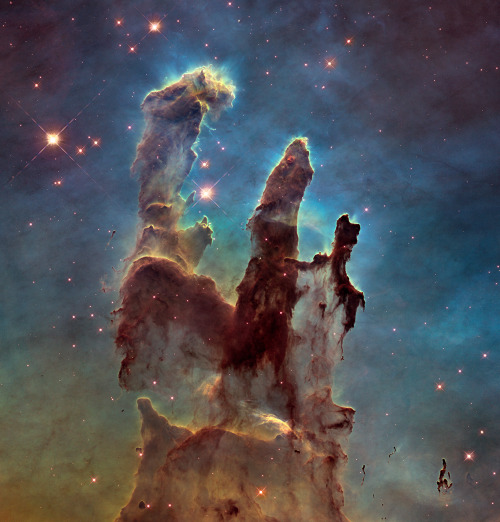
Sometimes... there’s more than meets the eye. 👀 You’re looking at two very different takes on an iconic image.
Human eyes can see only a small portion of the range of radiation given off by the objects around us. We call this wide array of radiation the electromagnetic spectrum, and the part we can see visible light.
In the first image, researchers revisited one of Hubble Space Telescope’s most popular sights: the Eagle Nebula’s Pillars of Creation. Here, the pillars are seen in infrared light, which pierces through obscuring dust and gas and unveil a more unfamiliar — but just as amazing — view of the pillars. The entire frame is peppered with bright stars and baby stars are revealed being formed within the pillars themselves. The image on the bottom is the pillars in visible light.
Image Credit: NASA, ESA/Hubble and the Hubble Heritage Team
Make sure to follow us on Tumblr for your regular dose of space: http://nasa.tumblr.com.

If we could squeeze a galaxy, it would be this fluffy-looking one.
Spiral galaxies like this, located 60 million light-years away, have supermassive black holes at their bright centers. Astronomers are trying to understand this cozy relationship.
Make sure to follow us on Tumblr for your regular dose of space: http://nasa.tumblr.com.
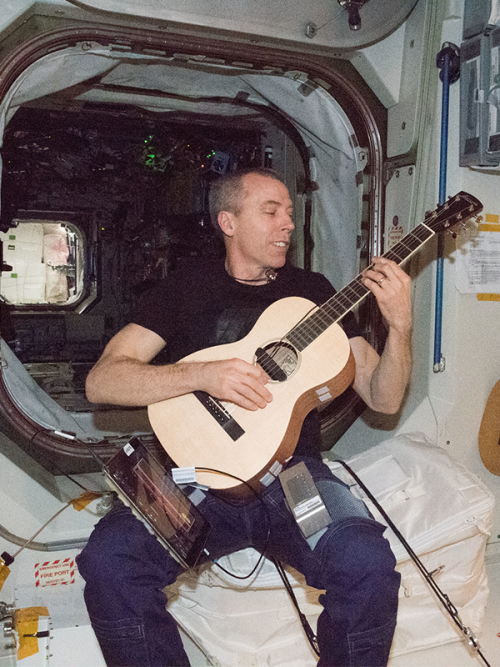
NASA Spotlight: Astronaut Andrew Feustel
Andrew J. Feustel was selected by NASA in 2000. The Lake Orion, Michigan native has a Ph.D. in the Geological Sciences, specializing in Seismology, and is a veteran of three spaceflights. In 2009, Dr. Feustel served on space shuttle mission STS-125. That mission was the fifth and final mission to service the Hubble Space Telescope that improved the observatory’s capabilities through 2014! Feustel most recently served as Commander on the International Space Station from March 21 through October 4, 2018. In his free time, Dr. Feustel enjoys auto restoration, guitar, water and snow skiing and is a fan of automotive and motorcycle racing.
He took some time from his job as a NASA astronaut to answer a few questions about his life and career! Enjoy:
While attending Oakland Community College, you worked as an auto mechanic. How does that job and the skills you learned relate to your job now as an astronaut?

I’ve often told people that I believe having this skillset is almost as important as my training in college and university. I relied on those skills almost every day in space and even on the ground while preparing for missions. That skillset has been really helpful in understanding how to maintain and repair equipment for spaceflight. In general, having those general skills of knowing how things fit together, what the structure is, and how things work, even without knowing anything about the particular item, is very helpful in life.
Has there ever been a time as a NASA Astronaut where you had to overcome self-doubt and if so, how did you?

Yes, probably the most impactful time I had to overcome self-doubt was on my very first mission as a rookie doing a spacewalk for the first time and having to make a repair on the Hubble Space Telescope. Since it was my first spacewalk, I didn’t know if I could do it and didn’t know how I would do. However, I had trained for that mission for three years and the training took over when I started the spacewalk. At that point, I didn’t focus on my self-doubt, I focused on my training and was able to carry out the tasks.
What are you most excited about for the upcoming Artemis Moon missions?
I am most excited about the possibility of humans establishing the ability to live off of our planet. To have the capability to exist on another surface. That, to me, is a start. Humans need that capability for us to live on the Moon then to go to Mars.
What did living in space teach you about community and teamwork?
Not just living in space, but working at NASA and training for space missions taught me a lot about community and teamwork. Living in space allows you to use the skills you learn about teamwork while training. While living in space you must rely on each other for everything. It’s important to recognize the value of working as a team. All of the astronauts have a very different mix of skills and that’s a great thing about the astronaut corps. Being successful and staying alive in space relies on community and teamwork.
What kind of impact did living and working in space have on how you view the Earth?

I am more aware of the fragility of our planet and species which is why humans should extend past the Earth. We are fragile as a planet and the Earth is vulnerable to the impacts of us living here. We cannot have zero impact on the planet, we will always have some impact, but the goal is to lessen the damage that we do to Earth to allow us to live here indefinitely if possible.
What or who inspired you to apply to be an astronaut?

I was inspired by reading the obituary of my great-great uncle. He was very successful in the utilities and railroad industry in the Midwest. Reading about his successes made me believe that I could do anything. I was also interested in space travel from a young age. I believed that I would be involved in the space industry. The motivation of understanding what family members had done before me really encouraged me to reach for my dreams and apply.
What book, movie, or show about space and/or astronauts is the most accurate? The least accurate? You wish was accurate?
I’m less concerned about the accuracy of space and space exploration portrayed in movies, but more interested with the creative thought behind them and I am fascinated with ideas and imagination of the people making these movies. Things portrayed as science fiction in the past become science fact in the future.
What's the most common misconception about astronauts / working at NASA?
The most common misconception about astronauts is that we go on spaceflights often. Over 95% of our job is spent working on the ground. People should come to this job because it’s important to space and space exploration. The job entails so much more than going into space yourself, but the good news is it’s all awesome. I have never been bored at my job. There are so many exciting parts of this work that contribute to NASA missions even if it doesn’t always mean being in space.
Can you share your favorite photo or video that you took in space?

My favorite photo is this one of Michigan and Canada. It captures my life – where I lived and everyone that I know and my family and friends – that’s where I consider home. It’s such a beautiful image.
That’s a wrap! Thank you Dr. Feustel for your time!
Make sure to follow us on Tumblr for your regular dose of space: http://nasa.tumblr.com.
When Dwarfs Meet Giants, and Other True Cosmic Fairy Tales
It’s easy to get lost in fantasy worlds through science-fiction movies and novels, but did you know that some of your favorite fairy tale characters actually exist in cosmic form? From dwarfs and giants to shape-shifters and buried treasure, the universe is home to a multitude of mystical objects.
White Dwarf Stars

You’ve probably heard of dwarfs like Happy and Sneezy (or Gimli and Thorin), but it’s unlikely you’re familiar with the space-dwelling dwarfs with names like Sirius B and ASASSN-16oh. White dwarf stars like these are typically about the size of Earth, which is pretty small as far as stars go. They represent one of three final stages of stellar evolution, along with neutron stars and black holes. Each star’s mass determines which one it will ultimately become. Stars much more massive than the Sun typically become neutron stars or black holes, and lower-mass stars end up as white dwarfs.

Our Sun will eventually become a white dwarf after it exhausts its fuel, but don’t worry — we’ve got several billion years to go! Before it is reduced to a white dwarf it will actually expand into a red giant, swelling out to encompass Earth’s orbit. But we don’t have to wait billions of years to see stellar giants … some already peek out at us from the cosmic deep.
Giants and Supergiants

The red giant star Aldebaran, located about 65 light-years away, is about 5,000 times bigger than Earth. Our Cassini spacecraft imaged Aldebaran through Saturn’s rings in 2006, but you can see it for yourself during northern winter. Just look for the brightest star in the constellation Taurus.

Fairy tale giants may be taller than trees, but these supergiant stars can be over 100,000 times “taller” than our entire planet! Supergiant stars are likely becoming more rare as time goes on. While scientists believe they used to be more common, our whole galaxy now contains just a small smattering of supergiants.

These massive stars grace the galaxy for a relatively small amount of time. They burn through their fuel extremely quickly — in just a few million years, as opposed to hundreds of billions of years for the smallest stars! Supergiants often end their lives in dramatic explosions called supernovae.

Betelgeuse — the bright, reddish star marking the shoulder of Orion — is nearing the end of its life and has expanded to become a red supergiant star. It is destined to explode as a supernova, which might happen tonight … or within the next few hundred thousand years.
Ghostly Solar Neutrinos

Even an average star like our Sun has some seemingly magical qualities. Each second, it sends billions of phantom-like neutrino particles out into space. They travel almost as fast as light and don’t usually interact with normal matter. Billions of them are zipping harmlessly straight through your body while you read this. Even at night they go through the entire Earth before reaching you!

But that’s not all … these ghostly particles are shape-shifters, too! Neutrinos can change characteristics over time, morphing between different versions of themselves. Spooky!
Buried Treasure in the Heart of the Galaxy

Extensive clouds of dust enshroud the heart of our Milky Way galaxy, hiding it from our view — at least when it comes to visible light. The dust isn’t as big a problem for infrared light, however, which has allowed us to get a glimpse of our galaxy’s chaotic core thanks to our Hubble and Spitzer space telescopes.

Future missions may peer into the galactic core in search of buried treasure — thousands of planets orbiting distant stars!
Want to learn about more cosmic objects? Find them here!
Make sure to follow us on Tumblr for your regular dose of space: http://nasa.tumblr.com
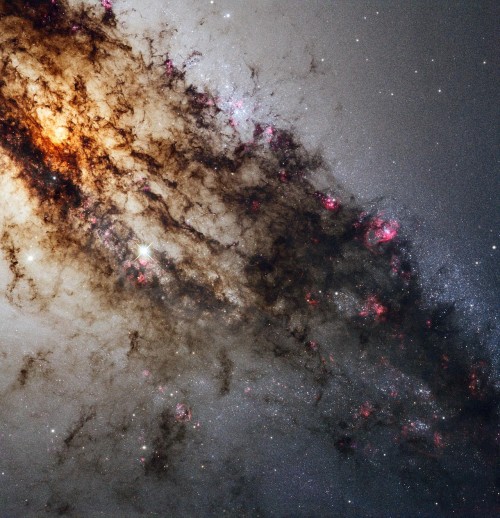
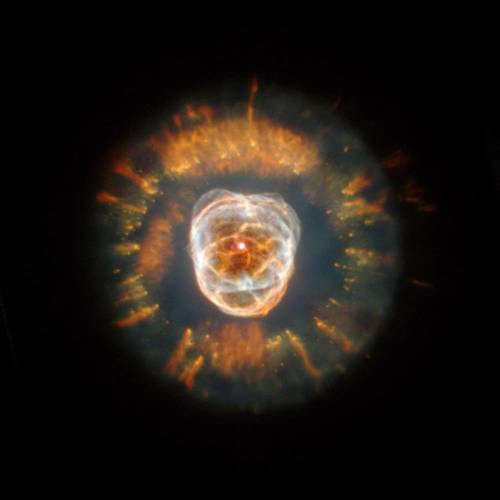
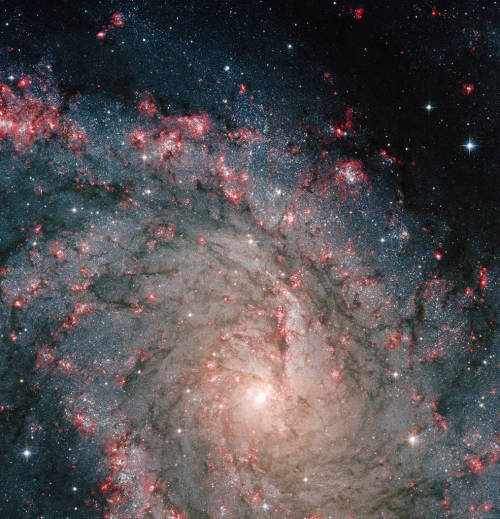
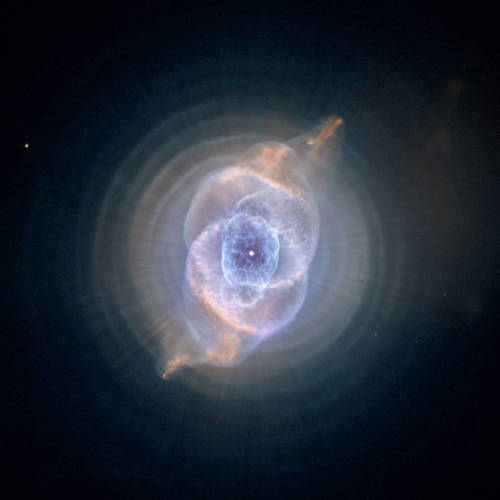
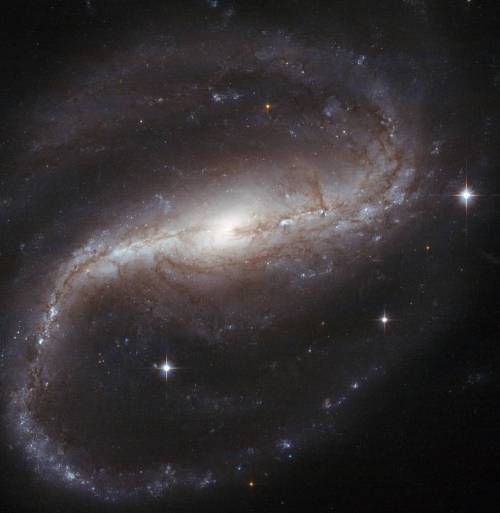
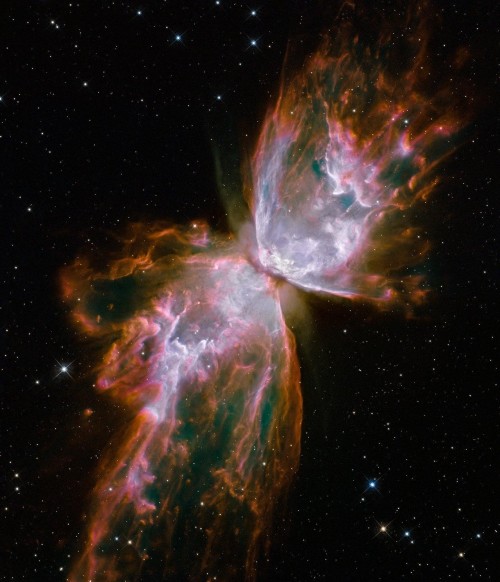

Be your own explorer ✨the cosmos is waiting...
From nearby clouds of gas and dust to remote galaxies that formed billions of years ago, tour the night sky with our Hubble Space Telescope’s new Caldwell catalog. The catalog of star clusters, galaxies and nebulas was first produced to highlight cosmic wonders visible to amateur astronomers. Since then Hubble has taken images of 95 out of the 109 objects, bringing these objects to life in exquisite detail.
While the objects can be observed using modest ground-based telescopes, Hubble’s Caldwell collection has been assembled for astronomers to see the finer details of each object in the night sky.
View the full collection here!
Make sure to follow us on Tumblr for your regular dose of space: http://nasa.tumblr.com.
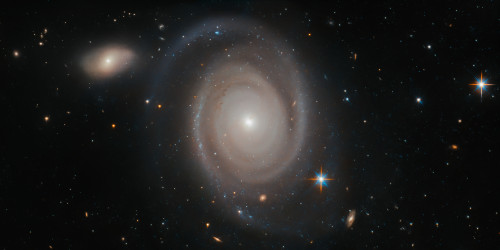
Not all galaxies are lonely. Some have galaxy squads.
NGC 1706, captured in this image by our Hubble Space Telescope, belongs to something known as a galaxy group, which is just as the name suggests — a group of up to 50 galaxies which are gravitationally bound and relatively close to each other.
Our home galaxy, the Milky Way, has its own squad — known as the Local Group, which also contains the Andromeda galaxy, the Large and Small Magellanic clouds and the Triangulum galaxy.
Make sure to follow us on Tumblr for your regular dose of space: http://nasa.tumblr.com.

O_o When we peer deep into space, we don't expect to find something staring back at us...
This galactic ghoul, captured by our Hubble Space Telescope, is actually a titanic head-on collision between two galaxies. Each "eye" is the bright core of a galaxy, one of which slammed into another. The outline of the face is a ring of young blue stars. Other clumps of new stars form a nose and mouth.
Although galaxy collisions are common most of them are not head-on smashups like this Arp-Madore system. Get spooked & find out what lies inside this ghostly apparition, here.
Make sure to follow us on Tumblr for your regular dose of space: http://nasa.tumblr.com
SPACE: A Global Frontier
Space is a global frontier. That’s why we partner with nations all around the world to further the advancement of science and to push the boundaries of human exploration. With international collaboration, we have sent space telescopes to observe distant galaxies, established a sustainable, orbiting laboratory 254 miles above our planet’s surface and more! As we look forward to the next giant leaps in space exploration with our Artemis lunar exploration program, we will continue to go forth with international partnerships!
Teamwork makes the dream work. Here are a few of our notable collaborations:
Artemis Program

Our Artemis lunar exploration program will send the first woman and the next man to the Moon by 2024. Using innovative technologies and international partnerships, we will explore more of the lunar surface than ever before and establish sustainable missions by 2028.
During these missions, the Orion spacecraft will serve as the exploration vehicle that will carry the crew to space, provide emergency abort capability and provide safe re-entry from deep space return velocities. The European Service Module, provided by the European Space Agency, will serve as the spacecraft’s powerhouse and supply it with electricity, propulsion, thermal control, air and water in space.

The Gateway, a small spaceship that will orbit the Moon, will be a home base for astronauts to maintain frequent and sustainable crewed missions to the lunar surface. With the help of a coalition of nations, this new spaceship will be assembled in space and built within the next decade.
Gateway already has far-reaching international support, with 14 space agencies agreeing on its importance in expanding humanity's presence on the Moon, Mars and deeper into the solar system.
International Space Station

The International Space Station (ISS) is one of the most ambitious international collaborations ever attempted. Launched in 1998 and involving the U.S., Russia, Canada, Japan and the participating countries of the European Space Agency — the ISS has been the epitome of global cooperation for the benefit of humankind. The largest space station ever constructed, the orbital laboratory continues to bring together international flight crews, globally distributed launches, operations, training, engineering and the world’s scientific research community.
Hubble Space Telescope

The Hubble Space Telescope, one of our greatest windows into worlds light-years away, was built with contributions from the European Space Agency (ESA).

ESA provided the original Faint Object Camera and solar panels, and continues to provide science operations support for the telescope.
Deep Space Network

The Deep Space Network (DSN) is an international array of giant radio antennas that span the world, with stations in the United States, Australia and Spain. The three facilities are equidistant approximately one-third of the way around the world from one another – to permit constant communication with spacecraft as our planet rotates. The network supports interplanetary spacecraft missions and a few that orbit Earth. It also provides radar and radio astronomy observations that improve our understanding of the solar system and the larger universe!
Mars Missions
Information gathered today by robots on Mars will help get humans to the Red Planet in the not-too-distant future. Many of our Martian rovers – both past, present and future – are the products of a coalition of science teams distributed around the globe. Here are a few notable ones:
Curiosity Mars Rover

France: ChemCam, the rover’s laser instrument that can analyze rocks from more than 20 feet away
Russia: DAN, which looks for subsurface water and water locked in minerals
Spain: REMS, the rover’s weather station
InSight Mars Lander

France with contributions from Switzerland: SEIS, the first seismometer on the surface of another planet
Germany: HP3, the heatflow probe that will help us understand the interior structure of Mars
Spain: APSS, the lander’s weather station
Mars 2020 Rover

Norway: RIMFAX, a ground-penetrating radar
France: SuperCam, the laser instrument for remote science
Spain: MEDA, the rover’s weather station
Space-Analog Astronaut Training
We partner with space agencies around the globe on space-analog missions. Analog missions are field tests in locations that have physical similarities to the extreme space environments. They take astronauts to space-like environments to prepare as international teams for near-term and future exploration to asteroids, Mars and the Moon.

The European Space Agency hosts the Cooperative Adventure for Valuing and Exercising human behavior and performance Skills (CAVES) mission. The two week training prepares multicultural teams of astronauts to work safely and effectively in an environment where safety is critical. The mission is designed to foster skills such as communication, problem solving, decision-making and team dynamics.

We host our own analog mission, underwater! The NASA Extreme Environment Mission Operations (NEEMO) project sends international teams of astronauts, engineers and scientists to live in the world’s only undersea research station, Aquarius, for up to three weeks. Here, “aquanauts” as we call them, simulate living on a spacecraft and test spacewalk techniques for future space missions in hostile environments.
International Astronautical Congress
So, whether we’re collaborating as a science team around the globe, or shoulder-to-shoulder on a spacewalk, we are committed to working together with international partners for the benefit of all humanity!
If you’re interested in learning more about how the global space industry works together, check out our coverage of the 70th International Astronautical Congress (IAC) happening this week in Washington, D.C. IAC is a yearly gathering in which all space players meet to talk about the advancements and progress in exploration.
Make sure to follow us on Tumblr for your regular dose of space: http://nasa.tumblr.com

Say hello to the Saturn Nebula 👋
Garden-variety stars like the Sun live fairly placid lives in their galactic neighborhoods, casually churning out heat and light for billions of years. When these stars reach retirement age, however, they transform into unique and often psychedelic works of art. This Hubble Space Telescope image of the Saturn Nebula shows the result, called a planetary nebula. While it looks like a piece of wrapped cosmic candy, what we see is actually the outer layers of a dying star.
Stars are powered by nuclear fusion, but each one comes with a limited supply of fuel. When a medium-mass star exhausts its nuclear fuel, it will swell up and shrug off its outer layers until only a small, hot core remains. The leftover core, called a white dwarf, is a lot like a hot coal that glows after a barbecue — eventually it will fade out. Until then, the gaseous debris fluoresces as it expands out into the cosmos, possibly destined to be recycled into later generations of stars and planets.
Using Hubble’s observations, scientists have characterized the nebula’s composition, structure, temperature and the way it interacts with surrounding material. Studying planetary nebulas is particularly interesting since our Sun will experience a similar fate around five billion years down the road.
Make sure to follow us on Tumblr for your regular dose of space: http://nasa.tumblr.com.
Hubble’s 5 Weirdest Black Hole Discoveries
Our Hubble Space Telescope has been exploring the wonders of the universe for nearly 30 years, answering some of our deepest cosmic questions. Some of Hubble’s most exciting observations have been about black holes — places in space where gravity pulls so much that not even light can escape. As if black holes weren’t wild enough already, Hubble has helped us make discoveries that show us they’re even weirder than we thought!
Supermassive Black Holes Are Everywhere

First, these things are all over the place. If you look at any random galaxy in the universe, chances are it has a giant black hole lurking in its heart. And when we say giant, we’re talking as massive as millions or even billions of stars!

Hubble found that the mass of these black holes, hidden away in galactic cores, is linked to the mass of the host galaxy — the bigger the galaxy, the bigger the black hole. Scientists think this may mean that the black holes grew along with their galaxies, eating up some of the stuff nearby.
Some Star Clusters Have Black Holes

A globular cluster is a ball of old, very similar stars that are bound together by gravity. They’re fairly common — our galaxy has at least 150 of them — but Hubble has found some black sheep in the herd. Some of these clusters are way more massive than usual, have a wide variety of stars and may even harbor a black hole at the center. This suggests that at least some of the globular clusters in our galaxy may have once been dwarf galaxies that we absorbed.
Black Hole Jets Regulate Star Birth

While black holes themselves are invisible, sometimes they shoot out huge jets of energy as gas and dust fall into them. Since stars form from gas and dust, the jets affect star birth within the galaxy.

Sometimes they get rid of the fuel needed to keep making new stars, but Hubble saw that it can also keep star formation going at a slow and steady rate.
Black Holes Growing in Colliding Galaxies

If you’ve ever spent some time stargazing, you know that staring up into a seemingly peaceful sea of stars can be very calming. But the truth is, it’s a hectic place out there in the cosmos! Entire galaxies — these colossal collections of gas, dust, and billions of stars with their planets — can merge together to form one supergalaxy. You might remember that most galaxies have a supermassive black hole at the center, so what happens to them when galaxies collide?

In 2018, Hubble unveiled the best view yet of close pairs of giant black holes in the act of merging together to form mega black holes!
Gravitational Wave Kicks Monster Black Hole Out of Galactic Core

What better way to spice up black holes than by throwing gravitational waves into the mix! Gravitational waves are ripples in space-time that can be created when two massive objects orbit each other.

In 2017, Hubble found a rogue black hole that is flying away from the center of its galaxy at over 1,300 miles per second (about 90 times faster than our Sun is traveling through the Milky Way). What booted the black hole out of the galaxy’s core? Gravitational waves! Scientists think that this is a case where two galaxies are in the late stages of merging together, which means their central black holes are probably merging too in a super chaotic process.
Want to learn about more of the highlights of Hubble’s exploration? Check out this page! https://www.nasa.gov/content/goddard/2017/highlights-of-hubble-s-exploration-of-the-universe
Make sure to follow us on Tumblr for your regular dose of space: http://nasa.tumblr.com

We are swooningggg over this NEW Saturn image.
Saturn is so beautiful that astronomers cannot resist using the Hubble Space Telescope to take yearly snapshots of the ringed world when it is at its closest distance to Earth. 😍
These images, however, are more than just beauty shots. They reveal exquisite details of the planet as a part of the Outer Planets Atmospheres Legacy project to help scientists understand the atmospheric dynamics of our solar system's gas giants.
This year's Hubble offering, for example, shows that a large storm visible in the 2018 Hubble image in the north polar region has vanished. Also, the mysterious six-sided pattern – called the "hexagon" – still exists on the north pole. Caused by a high-speed jet stream, the hexagon was first discovered in 1981 by our Voyager 1 spacecraft.
Saturn's signature rings are still as stunning as ever. The image reveals that the ring system is tilted toward Earth, giving viewers a magnificent look at the bright, icy structure.
Image Credit: NASA, ESA, A. Simon (GSFC), M.H. Wong (University of California, Berkeley) and the OPAL Team
Make sure to follow us on Tumblr for your regular dose of space: http://nasa.tumblr.com
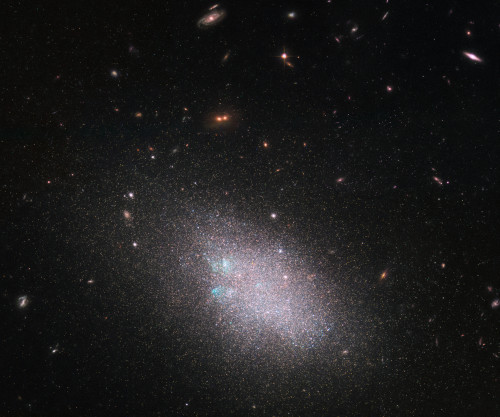
Look! A cosmic block party 🥳 In this Hubble image, you’ll find 50 spiral and dwarf galaxies hanging out in our cosmic neighborhood. The main focal point of stars is actually a dwarf galaxy. Dwarf galaxies often show a hazy structure, an ill-defined shape and an appearance somewhat akin to a swarm or cloud of stars — and UGC 685 is no exception to this. These data were gathered under Hubble’s Legacy ExtraGalactic UV Survey (LEGUS) program, the sharpest and most comprehensive ultraviolet survey of star-forming galaxies in the nearby universe. Image Credit: ESA/Hubble & NASA; the LEGUS team, B. Tully, D. Calzetti
Make sure to follow us on Tumblr for your regular dose of space: http://nasa.tumblr.com
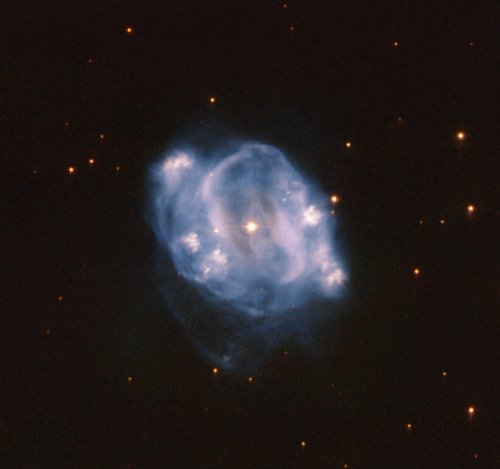
Twinkle, twinkle, little star, How I wonder what you are. Up above the world so high, Like a diamond in the sky. 🌟 The final stages of a star’s life allow us a glimpse into the future of our own solar system. This image from our Hubble Space Telescope shows what’s left of a star 10,000 light-years from Earth.
A star like our Sun will, at the end of its life, transform into a red giant. The core of the star will eventually collapse in on itself, ejecting the surface layers outward. After that, all that remains of the star is what we see here: glowing outer layers surrounding a white dwarf star. In just a few thousand years they will have dissipated, and all that will be left to see is the dimly glowing white dwarf. More on this image, here.
Make sure to follow us on Tumblr for your regular dose of space: http://nasa.tumblr.com